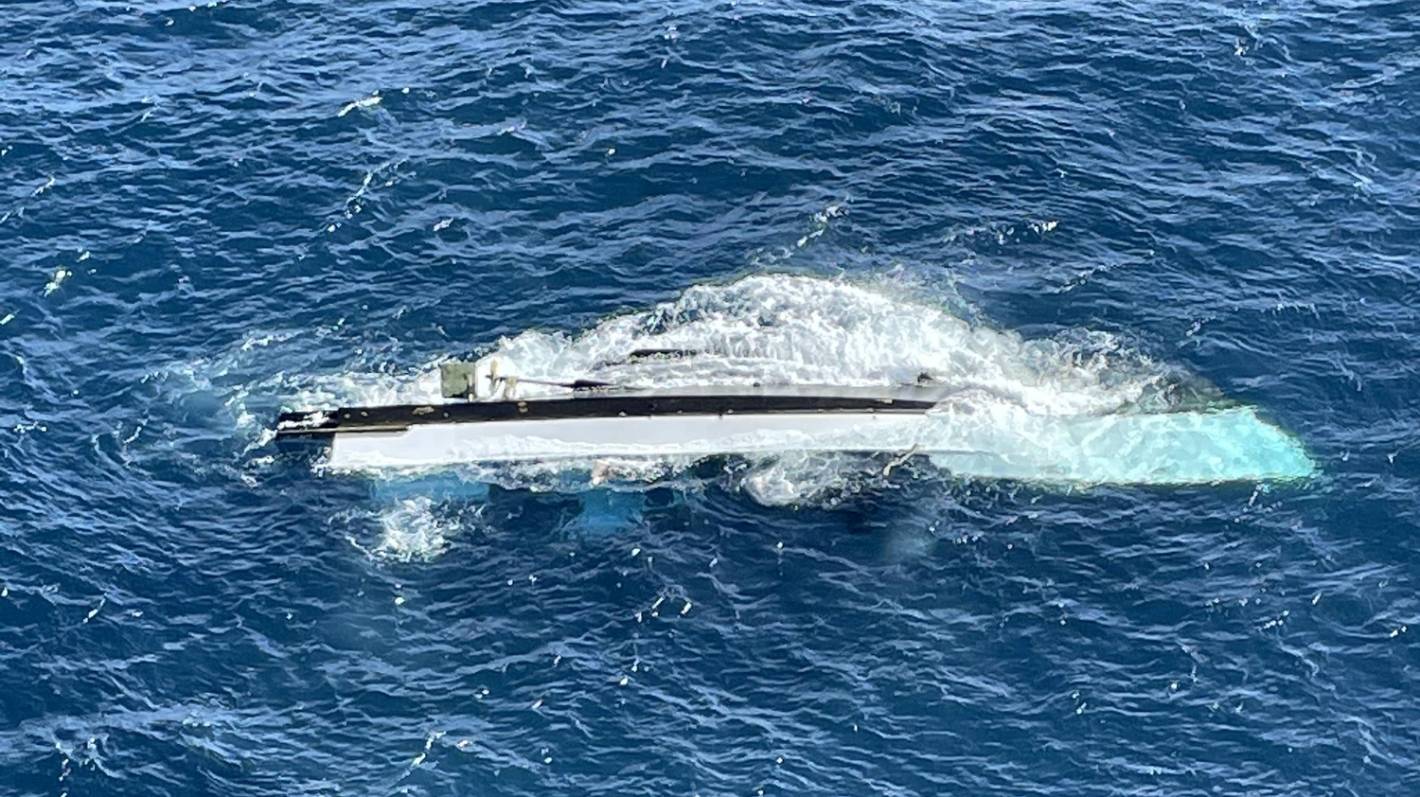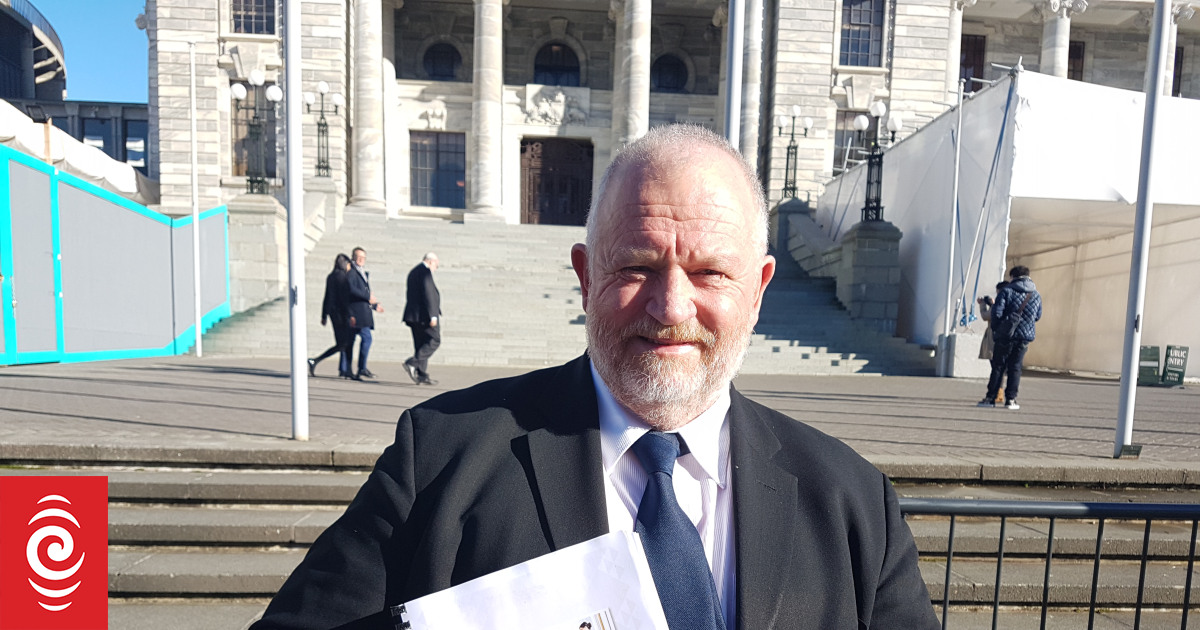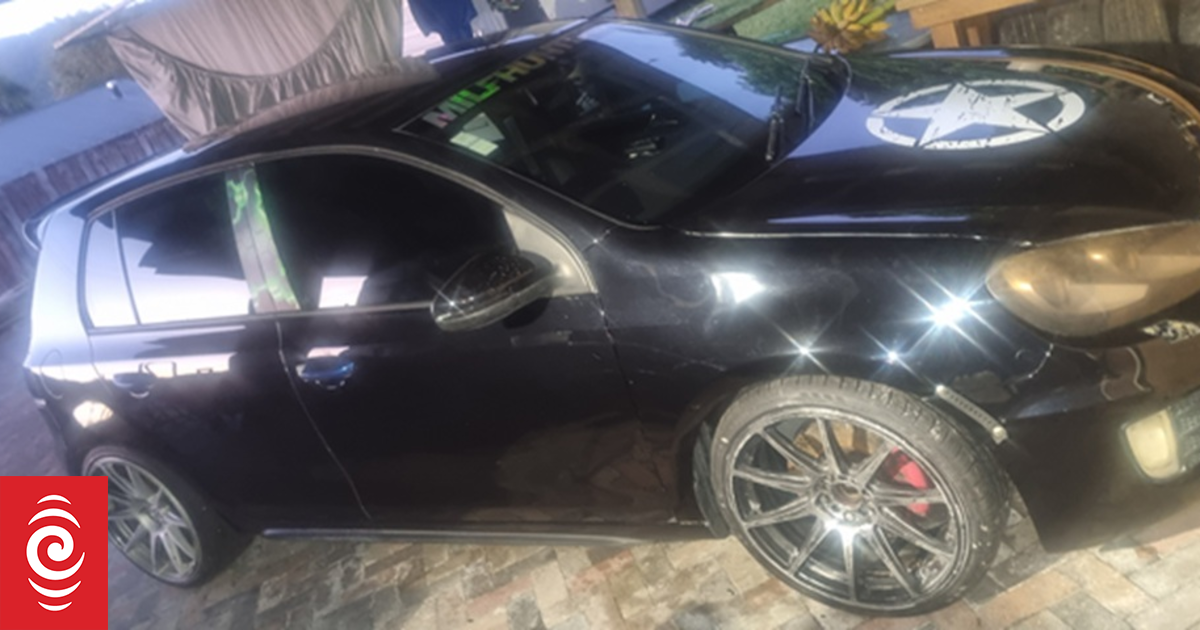- The Enchanter was capsized by a wave forming a near-vertical wall of water, likely because it was in far shallower water than the skipper thought.
- No one could reach a life jacket because they were stowed under bunks in the front passenger cabin.
- Essential helicopters were grounded from the search and rescue operation for 4½ hours because of a lack of fuel.
- Four people who survived the initial accident later died, along with one person who was trapped in the cabin.
An inquiry into the fatal capsize of the fishing charter boat Enchanter has found problems with the skipper’s navigation and delays with the search and rescue operation.
Five people died when the Enchanter was capsized near North Cape by a large wave forming a “wall of water” on March 20, 2022.
They were Mike Lovett, 72, Richard Bright, 63, Mark Sanders, 43, Mark Walker, 41 and Geoff Allen, 72 – all Waikato fathers who had formed a tight-knit fishing syndicate out of Bright’s Cambridge bar.
Five other people – including skipper Lance Goodhew and deckhand Kobe O’Neill – were winched to safety by helicopter in dark and atrocious conditions.
Maritime New Zealand later charged the skipper and his business, Enchanter Charters, with Health and Safety and Maritime Transport breaches. These charges are still before the courts.
Auckland Westpac Rescue Helicopter/Supplied
The Enchanter was capsized in March 2022 by a large wave, leading to the deaths of five passengers.
A 100-page report by the Transport Accident Investigation Commission released on Friday has identified problems with the skipper’s navigation, the search and rescue operation, and the way the vessel was surveyed.
TAIC chief commissioner Jane Meares and chief investigator of accidents Naveen Kozhuppakalam presented the findings of the investigation into the accident.
The investigation found the rescue mission was fraught with delays due to the rescue helicopters not being dedicated to search and rescue, helicopter fuel not being available at the remote site and crew of a navy ship not understanding search and rescue terminology.
Safety features which could have helped survival also failed to work: life jackets were unreachable because of where they were stowed, life rafts failed to deploy and lifebuoys did not have reflective tape which would have made them easier to find.
Kozhuppakalam said it is likely Enchanter strayed into an area prone to occasional larger waves that peaked as they entered shallower water.
He said three people were alive in the water when last seen by survivors but were later found dead.
Supplied
The Enchanter was surveyed to be used as a fishing charter, but the survey did not pick up some life-saving devices were missing and the boat’s ability was tested in shallow waters. (File photo)
The commission has made nine recommendations to help improve and prioritise search and rescue operations, plus improve the safety of commercial vessels.
Recommendations include that Maritime NZ notify surveyors of changes to maritime rules and require commercial vessels carrying passengers outside inshore limits be fitted with an automatic identification system.
Meares said the Ministry of Transport should identify opportunities for the supply and storage of fuel and should have procedures for asking helicopter operators about their maximum range and opportunities for refuelling for sustained search and rescue operations.
Meares said fuel in remote areas tended to be available for medical services rather than search and rescue operations.
A number of factors would have improved survivability, including lifejackets, life rafts, track and trace technology and the fast deployment of search and rescue crew, Meares said.
The emergency locator beacon was also not activated until more than half an hour after the accident happened.
Meares said the report makes reference to a disagreement between TAIC and the skipper as to where the accident occurred.
She said the recommendations all need to be addressed and as soon as possible.
Kozhuppakalam said search and rescue operations need to have a cohesive unit.
“The accident was initially survived by nine of the 10 people on board, yet five people tragically died,” the commission said in its report.
Google Maps
The tragedy unfolded near North Cape, one of the remotest parts of the country. (File photo)
The fatal trip
The 16.2m Enchanter was on a five-day fishing charter at Three Kings Islands, and had spent a day sheltering from a northeast weather system, the commission found.
As the weather cleared, the skipper headed to Murimoto Island, just off North Cape, intending to spend the night there.
But before the boat could get to the island, at 7.50pm, it was hit on the side by a near-vertical wave, described by the skipper as a “wall of water”.
The inquiry considered if this wave was a rogue wave – an unexpectedly large and unpredictable wave.
But it found it walled up to a steep breaking wave because the boat was likely in water just 10m deep, far shallower than the 50m the skipper had estimated.
The wave knocked the boat down, causing the Enchanter’s main cabin and flybridge to tear from the hull, which capsized the vessel.
One passenger asleep in a forward cabin was trapped, while everyone else made it into the water.
The skipper, first mate and three passengers managed to scramble on top of the broken-off flybridge and upturned hull.
Four other passengers were seen in the water alive, including one who was clinging to a lifebuoy.
The rescue mission
Emergency equipment like life jackets couldn’t be reached because they were stowed under bunks in the front passenger cabin and the life rafts did not automatically deploy like they should have.
However, the Enchanter’s EPIRB (Emergency Position-Indicating Radio Beacon) surfaced next to the skipper and, while it didn’t automatically activate like it should have, he was able to manually turn it on.
The first mate soon noticed one passenger face-down in the water but efforts to resuscitate him were unsuccessful.
The NZ Rescue Co-ordination Centre tasked Northland Emergency Services Trust’s helicopter to respond and it managed to find and winch to safety the skipper, first mate and three passengers over two trips.
Auckland Westpac Rescue Helicopters also joined the search, but the inquiry found neither helicopter was dedicated for search and rescue – all are first air ambulances – and it took some time for them to gather crew and get equipped.
SUPPLIED
Richard Bright, who of the passengers who died in the Enchanter sinking, is described as someone who loved fishing and organised monthly trips for the regulars at his Cambridge pub. (File photo)
While the Northland trust has a trailer of fuel at Kaitāia Hospital, the fuel was quickly used up by the first two helicopters and both were grounded for 4½ hours while more fuel was sourced.
An air force P3 Orion and three fishing boats joined the search in the early hours of March 21, but it was not until first light that three bodies were recovered.
Navy vessel Taupō joined the search at about 11am. But, for 4½ hours – due to search terminology being confused with Defence Force terminology – it incorrectly took on the role of on-scene command, directing the search to a different area than the rescue centre wanted.
SUPPLIED
Mike Lovett was among the five passengers who died when the Enchanter capsized. (File photo)
The body of a fourth passenger was located at 1.20pm, while the fifth passenger was recovered from the hull by the police dive squad the following afternoon.
The inquiry found while the Enchanter was well-built and maintained, its stability and resilience was tested when it was operated in shallow waters, where steep breaking waves were more likely.
It also found the life rafts were not of a high enough standard, the lifebuoys did not have correct reflective tape and two lifebuoys did not have automatic lights – issues which should’ve been picked up by surveys.
The fact the life jackets could not be reached also had a factor in survivability, although the inquiry also noted passengers could’ve been affected by injuries from the capsize and pre-existing medical conditions.
Supplied
Mark Sanders was one of five passengers who died when the Enchanter sank. (File photo)
Recommendations aimed at addressing safety issues
The commission recommended the Ministry of Transport:
- Set standards for search and rescue assets and training.
- Identify and source air and maritime assets appropriate for search and rescue.
- Identify opportunities for fuel supply and storage for search and rescue operations.
- Have procedures to prompt air operators on maximum range and refuelling options for long operations.
- Develop a joint search and rescue training programme so terminology is understood.
Jason Oxenham/Stuff
Lifebuoys should have retro-reflective tape, as this one does, as well as automatic lights. The fact the Enchanter’s lifebuoys did not have these features was missed in a survey. (File photo)
To Maritime New Zealand it recommended:
- Implement a formal system to notify and instruct surveyors of changing maritime rules for building, maintaining and surveying vessels.
- Ensure it has an adequate system for monitoring the performance of marine surveyors.
- Ensure appropriate rules or guidance is given to marine surveyors and boat operators about the risk of having all life jackets stowed in one place which might not be accessible.
- Require commercial vessels to be fitted with an automatic identification system when carrying passengers beyond inshore limits.




